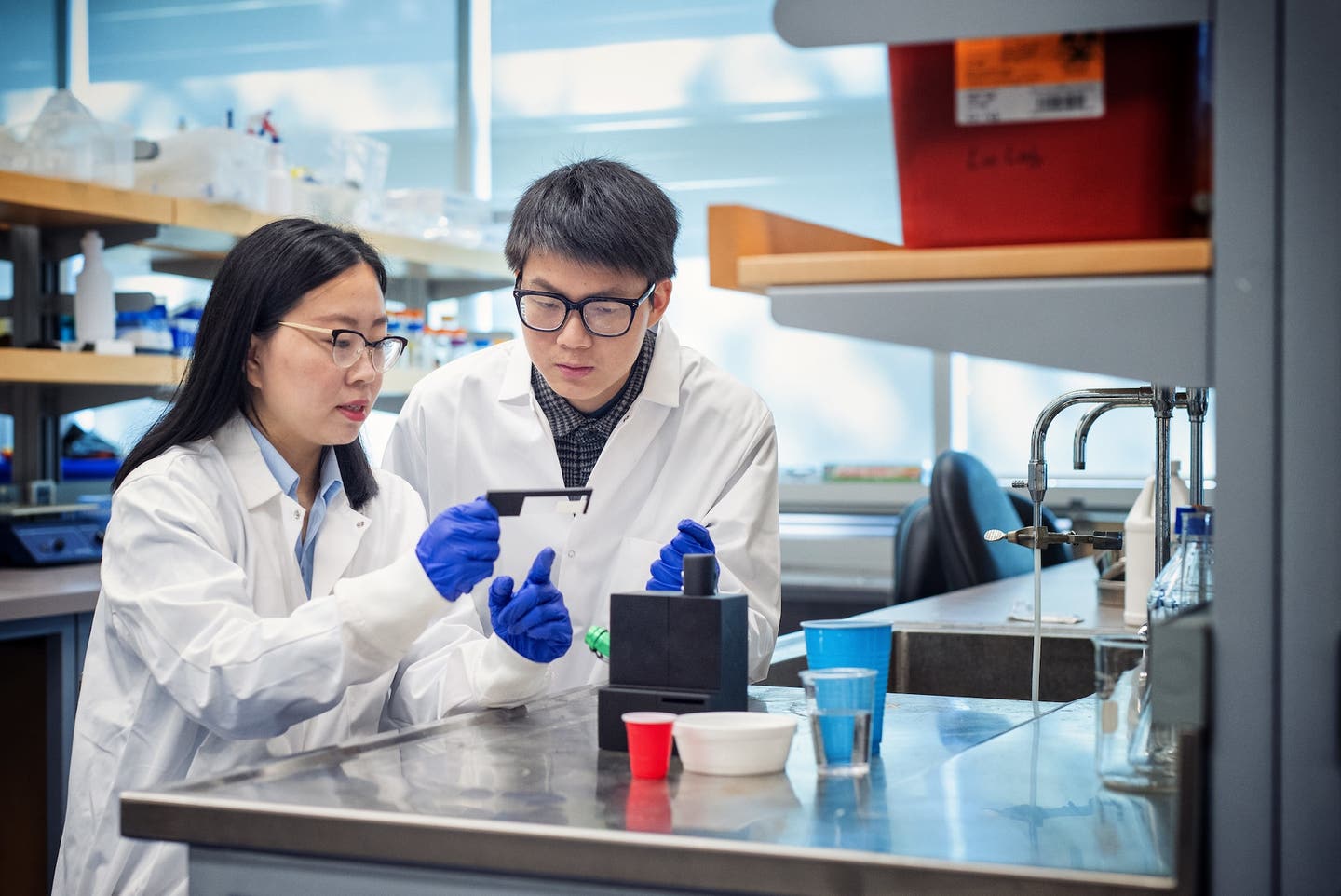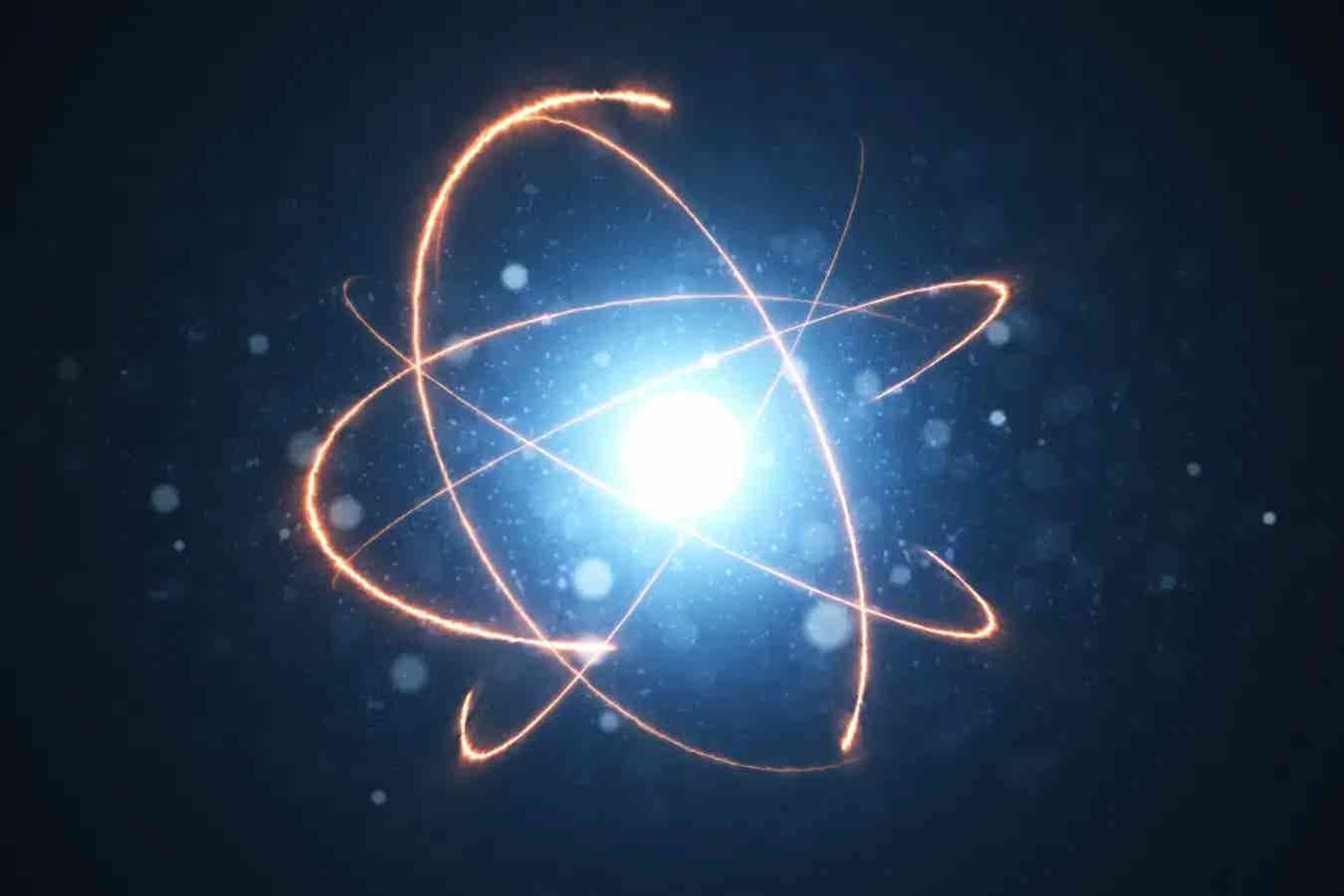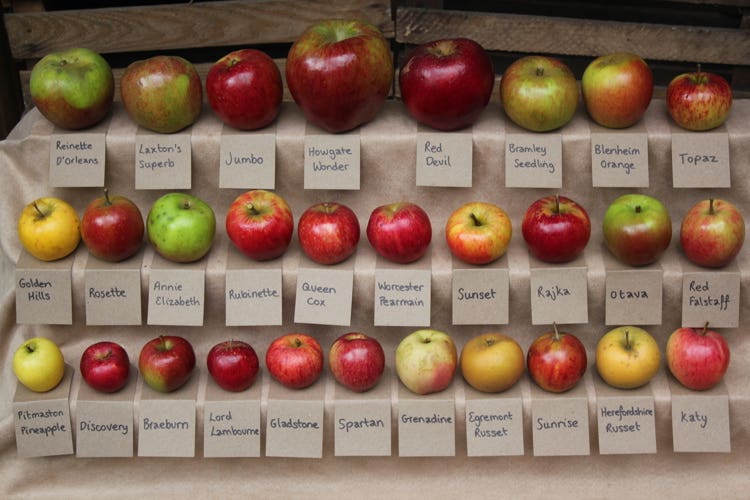Low-cost device accurately measures how much microplastics you are drinking
Researchers have developed a low-cost, portable device that can detect microplastics in everyday items like disposable cups and water bottles.

Dr. Tianxi Yang, an assistant professor in the faculty of land and food systems and co-author Haoming (Peter) Yang. (CREDIT: Martin Dee)
Microplastics and nanoplastics have become an alarming presence in our everyday lives, showing up in food, water, and even the air we breathe. These tiny particles have now been detected in human bodies, including the brain and other organs.
However, a recent breakthrough from the University of British Columbia could provide a quicker and cheaper way to detect these plastics in everyday items like water bottles and disposable cups.
Researchers from UBC have developed a low-cost, portable device that can measure the amount of plastic released from common products. This tool uses fluorescent labeling to identify plastic particles ranging from 50 nanometers to 10 microns—far smaller than the naked eye can see. Paired with a smartphone app, the device delivers results within minutes.
Dr. Tianxi Yang, an assistant professor in UBC’s faculty of land and food systems, led the project. According to Dr. Yang, “The breakdown of larger plastic pieces into microplastics and nanoplastics presents significant threats to food systems, ecosystems, and human health. This new technique allows quick, cheap detection of these plastics, which could help protect our health and ecosystems.”
Micro- and nanoplastics originate from the degradation of everyday items like disposable cups, lunchboxes, and utensils. The smaller the plastic particles, the greater their potential to harm human health due to their ability to absorb toxins and penetrate biological barriers, such as those protecting the brain or reproductive organs.
Historically, detecting these particles has required expensive equipment and trained personnel, making it difficult for most people to assess their exposure to microplastics. Dr. Yang’s team set out to change this by developing a simpler, faster, and more accessible method of detection. The result is a small, biodegradable, 3D-printed box that contains a wireless digital microscope, a green LED light, and an excitation filter.
Related Stories
The device works by using a machine-learning algorithm integrated with MATLAB software and image capture technology. A tiny liquid sample, smaller than a drop of water, is all that’s needed. The plastic particles glow under the green LED light inside the microscope, making it possible to visualize and count them. The data is then sent to a smartphone app, which calculates the number of plastic particles in the sample and provides an easy-to-understand result.
The device uses a luminescent labeling strategy, relying on metal-phenolic networks composed of zirconium ions, tannic acid, and rhodamine B to label various sizes of plastic particles. The method can identify as few as 330 microplastics and more than 3 million nanoplastics in less than 20 minutes, making it one of the most sensitive portable tools currently available.
The method and findings of the study can be found detailed in ACS Sensors.
One of the tests conducted by Dr. Yang’s team focused on disposable polystyrene cups. They filled the cups with boiling water, letting it cool for 30 minutes. The results were startling: the cups released hundreds of millions of tiny plastic particles, each about one-hundredth the width of a human hair.
"Once the microscope in the box captures the fluorescent image, the app matches the image’s pixel area with the number of plastics," explained Haoming (Peter) Yang, a master’s student and co-author of the study. “The readout shows if plastics are present and how much. Each test costs only 1.5 cents.”
Currently, the tool is calibrated to measure polystyrene, but the machine-learning algorithm could be adapted to measure other types of plastics, such as polyethylene or polypropylene. The research team aims to commercialize the device and expand its capabilities to detect a wider range of plastic types in different real-world applications.
The long-term effects of ingesting micro- and nanoplastics are still being studied, but there is growing concern about the potential health risks. These tiny particles may be ingested through food, beverages, and even airborne plastic dust.
Dr. Yang emphasized the importance of reducing plastic exposure: "To reduce plastic ingestion, it is important to consider avoiding petroleum-based plastic products by opting for alternatives like glass or stainless steel for food containers. The development of biodegradable packaging materials is also important for replacing traditional plastics and moving towards a more sustainable world."
The environmental risks posed by micro- and nanoplastics extend beyond human health. Their accumulation in ecosystems threatens both terrestrial and aquatic organisms. Designing portable and sensitive tools to assess these risks is crucial. However, existing methods of detecting these tiny particles are limited in effectiveness.
Dr. Yang’s team hopes that their new device will not only improve detection but also raise awareness of the growing threat that microplastics pose to both human health and the environment.
As research continues into the impact of microplastics on human health and the environment, tools like this could play a key role in understanding and mitigating the risks. By making detection more accessible and affordable, UBC’s innovation could help reduce the presence of harmful plastics in our food, water, and ecosystems.
Note: Materials provided above by The Brighter Side of News. Content may be edited for style and length.
Like these kind of feel good stories? Get The Brighter Side of News' newsletter.
Rebecca Shavit
Science & Technology Journalist | Innovation Storyteller
Based in Los Angeles, Rebecca Shavit is a dedicated science and technology journalist who writes for The Brighter Side of News, an online publication committed to highlighting positive and transformative stories from around the world. With a passion for uncovering groundbreaking discoveries and innovations, she brings to light the scientific advancements shaping a better future. Her reporting spans a wide range of topics, from cutting-edge medical breakthroughs and artificial intelligence to green technology and space exploration. With a keen ability to translate complex concepts into engaging and accessible stories, she makes science and innovation relatable to a broad audience.



